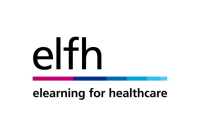Anaesthesia | Obstetrics | Body Composition and Growth



Body Composition and Growth
Session Overview
Description
The session starts with an introduction to the concept of growth and development, and why this is important for paediatric anaesthesia pharmacology. This includes an important outline of what is ‘normal’. A key point of this session is for the trainee to learn how to calculate approximate weight from the age of the child. The session will also discuss changes in body composition such as muscle and fat, as well as developmental changes in fluid compartments and blood volume. Lastly, the session will indicate how organs develop in terms of relative size, blood flow and maturity. The implications of these factors are briefly discussed.
Learning Objectives
By the end of this session you will be able to:
- Discuss what is meant by ‘normal’
- Calculate the approximate weight of a child based on age
- Describe why growth and development is relevant to paediatric pharmacology
- Describe how the relative composition of the body changes with age in terms of water, fat, fluid compartments and blood volume
Prerequisites
Before commencing this session you should:
- Know the blood volume and fluid compartment volumes in an average adult
A fundamental and obvious difference between children and adults is their size. Size and body composition impact on anaesthesia in a variety of ways. Therefore, a basic prerequisite to understanding paediatric anaesthesia is the appreciation of normal size and growth.
A few simple axioms can explain most relevant changes and a couple of easy-to-learn formulae can allow you to quickly calculate most of the information you will need in the day-to-day practice of paediatric anaesthesia.
- Anaesthesia | e-LA Learning Path: Edinburgh Medica...
- Posted By eIntegrity Healthcare e-Learning
- Posted Date: 2025-02-05
- Location:Online
- This session will cover the assessment and treatment of post-operative pain and management of early post-operative nausea and vomiting (PONV).
- Anaesthesia | e-LA Learning Path: Edinburgh Medica...
- Posted By eIntegrity Healthcare e-Learning
- Posted Date: 2025-02-05
- Location:Online
- This session illustrates the importance of effective airway maintenance in the recovery room, why oxygen therapy is required and how it can be safely and effectively administered.
- Anaesthesia | e-LA Learning Path: Edinburgh Medica...
- Posted By eIntegrity Healthcare e-Learning
- Posted Date: 2025-02-05
- Location:Online
- This session describes the function of a recovery facility, the most common problems likely to be encountered in post-operative patients, and makes suggestions for the management of these problems.
- Anaesthesia | e-LA Learning Path: Edinburgh Medica...
- Posted By eIntegrity Healthcare e-Learning
- Posted Date: 2025-02-05
- Location:Online
- This session outlines the basic definitions of local and regional anaesthesia (LA and RA), and advises when to use each as a sole technique and when to use in combination with general anaesthesia (GA). It also covers consent issues, minimal safety standar
- Acute Medicine | Palliative care | Non-drug interv...
- Posted By eIntegrity Healthcare e-Learning
- Posted Date: 2025-02-04
- Location:Online
- This session outlines a variety of non-drug interventions which may be used in an integrated approach to symptom management and enhance quality of life in end of life care. This session was reviewed by Louise Free and Richard Kitchen and last updated in F


